-

Klean SDGs

In 2015, the United Nations introduced 17 Sustainable Development Goals (known as “SDGs”) to provide targets and indicators for broad global sustainability achievements. Klean Industries has been contributing to each of these goals since the inception of the SDG program.
In this section, we illustrate our refined approach by aligning our focus on the following 10 of the SDGs, which is more than 50% of the established goals. As a company that operates globally, we are committed to actions that provide the greatest contributions to each project we undertake. It’s critical that we positively impact the local economy where our technologies and projects operate.
For more information about the SDGs please visit the United Nations website » GO.
Ongoing Progress
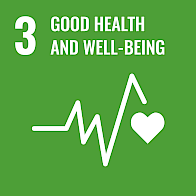 In the communities where Klean projects own and operate a fleet of vehicles used in logistics for the collection and distribution of products, we leverage both technology and training to keep drivers, passengers, and pedestrians safe. As a part of our process to ensure safety, all our vehicles have video event recorders to alert drivers to unsafe behavior. We also acknowledge and reward our employees for safe and effective work through the programs that highlight annual performance for Drivers, Operators, and Technicians. With every new project, we continue to upgrade the fleet of vehicles used so that we transition to a near-zero emissions fleet by using both electric, compressed natural gas (CNG) by each project so that natural gas can be combined with the use of renewable natural gas (RNG) which further reduces greenhouse gas (GHG) and nitrogen oxide emissions by over 90%.
In the communities where Klean projects own and operate a fleet of vehicles used in logistics for the collection and distribution of products, we leverage both technology and training to keep drivers, passengers, and pedestrians safe. As a part of our process to ensure safety, all our vehicles have video event recorders to alert drivers to unsafe behavior. We also acknowledge and reward our employees for safe and effective work through the programs that highlight annual performance for Drivers, Operators, and Technicians. With every new project, we continue to upgrade the fleet of vehicles used so that we transition to a near-zero emissions fleet by using both electric, compressed natural gas (CNG) by each project so that natural gas can be combined with the use of renewable natural gas (RNG) which further reduces greenhouse gas (GHG) and nitrogen oxide emissions by over 90%.
Goals:
2025
2035
Targets
Ongoing Progress
 Klean continues to use its advanced thermal treatment technologies such as pyrolysis and gasification to recover resources and to generate green electricity that is sold to public utilities, municipal utilities, and power cooperatives, while at the same time offsetting the emissions that would be created by landfilling or burning waste. Our newest project offset emission on a basis of 1:3, meaning for every tonne of waste we process, we offset 3 metric tonnes of carbon emissions. Klean has an estimated $15B in green energy projects under development globally.
Klean continues to use its advanced thermal treatment technologies such as pyrolysis and gasification to recover resources and to generate green electricity that is sold to public utilities, municipal utilities, and power cooperatives, while at the same time offsetting the emissions that would be created by landfilling or burning waste. Our newest project offset emission on a basis of 1:3, meaning for every tonne of waste we process, we offset 3 metric tonnes of carbon emissions. Klean has an estimated $15B in green energy projects under development globally.
Klean’s technologies also process a wide variety of waste streams such as waste plastic, scrap tires, automotive shredder residues, municipal solid wastes, agricultural and industrial wastes. All of the waste streams offer opportunities for resource recovery and the creation of green energy.
Beyond turning waste into energy, Klean also works with our partners to purchase 100% renewable electricity to power our facilities by 2025. We also support the adoption of renewable energy by others by hosting solar power installations on any of our project rooftops where it makes economic sense.
Goals:
2025
2035
Targets
Ongoing Progress
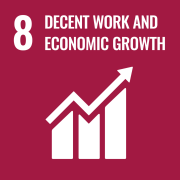
We are committed to paying all employees a living wage and guaranteeing a live-work flex model. Through the innovative employment program, and support local engineering apprenticeship and entrepreneurship programs we are giving back to the communities in which we work by creating high-skilled labor for the local markets where we operate. We also focus on providing second-chance employment opportunities to overlooked and underserved community populations. With each project, we provide working benefits that can be easily accessed by all employees through our innovative KleanLoop system.
With each project, we develop and operate we provide regularly disclosure metrics on diversity, equity and inclusion; freedom of association and collective bargaining; safety; carbon intensity; scope of emissions; water use and waste produced.
Klean’s technologies also process a wide variety of waste streams such as waste plastic, scrap tires, automotive shredder residues, municipal solid wastes, agricultural and industrial wastes. All of the waste streams offer opportunities for resource recovery and the creation of green energy.
Beyond turning waste into energy, Klean also works with our partners to purchase 100% renewable electricity to power our facilities by 2025. We also support the adoption of renewable energy by others by hosting solar power installations on any of our project rooftops where it makes economic sense.
Goals:
2025
2035
Targets
Ongoing Progress
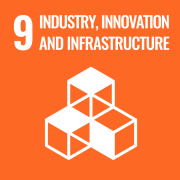
Klean’s newest corporately owned projects will include a number of petroleum-based processing plants that target scrap tires and waste plastics and convert them into recovered high-value resources which will re-enter the supply chain to be re-manufactured into new projects such as new tires and new plastics materials. These ultra-low-carbon-intensity recycling projects will generate self-sustaining energy that will provide the facilities with their own energy. Our goal to use 100% renewable electricity will support renewable energy and related infrastructure. We are investing $150 million per year for the next five years in new and upgraded recycling infrastructure.
Technologies like the KleanLoop DApp and Blockchain technology platform will bring a new level of market transparency to the plastic and tire recycling sector which will enable us to recycle more effectively. We will continue to report our carbon intensity metrics as we make progress.
Our supply chain team aims to increase our global footprint and has developed a Sustainable Supplier Alliance to engage in ongoing feedstock supplier and end product partnerships.
Goals:
2025
2035
Targets
Ongoing Progress
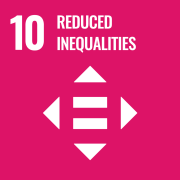
As we continue our growth we are making strides to hire women and employees from diverse racial and ethnic backgrounds, with an emphasis on hiring these individuals into leadership roles. We have pledged to provide a living wage to all employees and are on track to achieve this goal ahead of our 2025 commitment.
Klean has reached out to many national, international, and community-based organizations, including many Polytechnic Universities to proactively share opportunities with diverse populations.
Goals:
2025
2035
Targets
Ongoing Progress
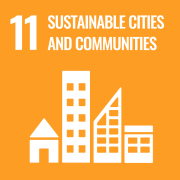 We have partnered with many organizations to work towards the develop an enterprise-wide program focused on environmental justice. Klean is committed to the circular economy, promoting the need for manufacturers to use post-consumer content in their products and for governments, industries, and individuals to buy products made with post-consumer content.
We have partnered with many organizations to work towards the develop an enterprise-wide program focused on environmental justice. Klean is committed to the circular economy, promoting the need for manufacturers to use post-consumer content in their products and for governments, industries, and individuals to buy products made with post-consumer content.
Klean’s GHG emission reduction goals, increased use of renewable energy, and generation of electricity and fuel from wastes reduce the environmental impact of cities and communities.
Goals:
2025
2035
Targets
Ongoing Progress
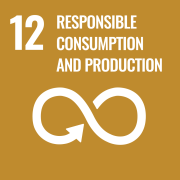 Klean business model is designed our allow the industrial manufacturing sector to use resources to be used more responsibly, and we continue to encourage people to reduce waste and dispose of materials properly in their daily lives. We provide consulting and advisory services on advanced resource recovery solutions and waste reduction strategies. Every project we undertake requires educational efforts that the company works through with regional planning departments to help reduce waste and emissions on a local level. Our entire team works to procure responsibly and sustainably made products and require our manufacturing partners to participate in showing their commitment to sustainability. Each year, we disclose our waste generation, water use, and carbon footprint from each of our operating facilities, and this is done through our KleanLoop technology that tracks and traces all aspects of our operations.
Klean business model is designed our allow the industrial manufacturing sector to use resources to be used more responsibly, and we continue to encourage people to reduce waste and dispose of materials properly in their daily lives. We provide consulting and advisory services on advanced resource recovery solutions and waste reduction strategies. Every project we undertake requires educational efforts that the company works through with regional planning departments to help reduce waste and emissions on a local level. Our entire team works to procure responsibly and sustainably made products and require our manufacturing partners to participate in showing their commitment to sustainability. Each year, we disclose our waste generation, water use, and carbon footprint from each of our operating facilities, and this is done through our KleanLoop technology that tracks and traces all aspects of our operations.
Goals:
2025
2035
Targets
Ongoing Progress
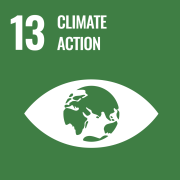
Climate change poses one of the biggest global risks to not only our business but also has significant long-term impacts on the sustainability of our economies. Our environmental education and conservation programs help inform the public about ways they can make a positive contribution.
Klean provides low-carbon technologies, solutions, and services to the circular economy we all want and need. We continue to develop new projects and jobs in a growing sector that is advancing at a rapid pace. This requires financial transparency throughout the supply chains where we operate.
Goals:
2025
2035
Targets
Ongoing Progress
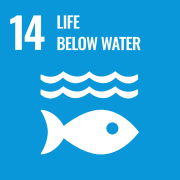 The proliferation of plastic waste has been devastating for the planet. Around 8 million tonnes of plastic is dumped in the ocean every year compromising the marine ecosystem. Proper disposal of plastic waste is a challenge in many parts of South East Asia due to mismanaged plastic waste management practices. In order to reduce the plastic footprint, Klean has taken a pledge to internally ban Single-Use Plastic from all its operations outside of the company’s recycling activities with waste. Supporting the growth and development of a circular economy, one in which products and raw materials are not wasted, but rather used to create new, valuable products, is a key goal of Klean’s technology portfolio and KleanLoop platform.
The proliferation of plastic waste has been devastating for the planet. Around 8 million tonnes of plastic is dumped in the ocean every year compromising the marine ecosystem. Proper disposal of plastic waste is a challenge in many parts of South East Asia due to mismanaged plastic waste management practices. In order to reduce the plastic footprint, Klean has taken a pledge to internally ban Single-Use Plastic from all its operations outside of the company’s recycling activities with waste. Supporting the growth and development of a circular economy, one in which products and raw materials are not wasted, but rather used to create new, valuable products, is a key goal of Klean’s technology portfolio and KleanLoop platform.
Since 1999, KleanTeam has been actively involved in manufacturing and building thermal processing plants to recover the value lock inside plastics. Over the next few years, Klean plans to roll out a number of plastic projects that convert low-quality mixed plastics waste, which would otherwise be destined for landfill or incineration for energy, into a feedstock for refinery assets to make new plastics. These projects continue to underscore commitment to innovative and sustainable technologies. It is a testament to our commitment to scale up advanced chemical recycling processes of plastics back to the original polymers and to grow the circular economy.
Goals:
2025
2035
Targets
Ongoing Progress
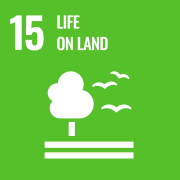 Our policy is not to finance any projects that degrade natural habitats or diminish biodiversity. We actively engage on issues that relate to sustainable investing we avoid projects that have the potential to undermine our investment thesis.
Our policy is not to finance any projects that degrade natural habitats or diminish biodiversity. We actively engage on issues that relate to sustainable investing we avoid projects that have the potential to undermine our investment thesis.
Deforestation and forest degradation, continued biodiversity loss and the ongoing degradation of ecosystems are having profound consequences for human well-being and survival. The world fell short on 2020 targets to halt biodiversity loss. The COVID-19 pandemic has shown that, by threatening biodiversity, humanity threatens its own survival. While great efforts are being made to expand sustainable forest management, increase coverage of key biodiversity areas and sign up to legislation and treaties for protecting biodiversity and ecosystems, much more needs to be done to put the health of the planet at the center of all plans and policies.
Protect, restore and promote sustainable use of terrestrial ecosystems, sustainably manage forests, combat desertification, halt and reverse land degradation and halt biodiversity loss.
Goals:
2025
2035
Targets
We support our client’s through our quoting and project development by providing a wealth of information and specifications about Klean Industries systems and technologies.
©2024 All Rights Reserved. Terms of Use